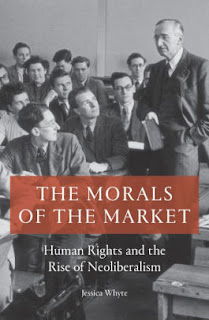 Albrecht Altdorfer and the Origins of Landscape, the coauthor of Anachronic Renaissance, and the editor of The Vienna School Reader: Politics and Art Historical Method in the 1930s.
Albrecht Altdorfer and the Origins of Landscape, the coauthor of Anachronic Renaissance, and the editor of The Vienna School Reader: Politics and Art Historical Method in the 1930s.Wood applied the “Page 99 Test” to his new book, A History of Art History, and reported the following:
On page 99 I quote Giovanni Andrea Gilio, a sixteenth-century Italian cleric who disapproved of the sensuous, stylish Christian art of his time, what we now call Mannerist art. Gilio contrasted the modern pictures to the simple, austere art of early Christian times. I then suggest that in this historical period, generally, worries about the religious content of images tended to interfere with the appreciation of those images’ artistic qualities. So for example when European travelers came into contact with cult images in South Asia they were unable to see those images also as artworks, so confident were they that the Hindu gods were false gods, or demons.Learn more about A History of Art History at the Princeton University Press website.
This page is a window opening onto one of the main topics of my book: relativism, or the willingness to cast a sympathetic gaze on unfamiliar artistic styles. Gilio was able to appreciate the sincere but clumsy early Christian paintings, so preparing the ground for an affirmative history of medieval art. But he could do this because he still felt connected, by continuity of religious doctrine, to those primitive Christians. His contemporaries had no such sympathy for Hinduism, and so had no sympathy for Hindu art.
My book is about art history as an intellectual project. The books asks: where, when, and why have people thought about art historically, or tried to write its history? In the Renaissance, the author of an art history was likely to be an artist, like the Italian painter Giorgio Vasari. In modern times, art history evolved into an academic discipline. Art history is written by cultures which cherish and protect art’s autonomy, its freedom from external pressures: mainly in China, and in Europe and beyond since the Renaissance.
Already Vasari had a strong sense of art’s independence, and of the primacy of form over content. The focus on form rather than content became the key to overcoming the European prejudices that clouded the vision of non-European art. By the nineteenth century art historians were ready to forgive the Hindus their doctrinal errors and so write inclusive, global art histories. Relativism—or the attempt to understand every culture and every artwork on its own terms—became the creed of the modern historiography of art.
--Marshal Zeringue
























